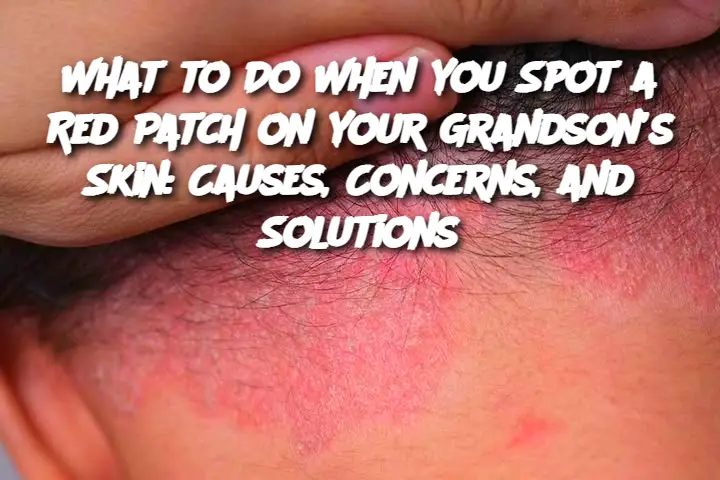ADVERTISEMENT
Introduction
It’s natural to be concerned when you notice an unfamiliar red patch on your grandson's skin. While skin rashes and patches are common, it can be difficult to determine whether it's something minor or if medical attention is needed. In this article, we will explore the potential causes of red patches on the skin, how to assess them, and the steps you should take to ensure your grandson’s well-being.
Potential Causes of a Red Patch on the Skin
Allergic Reaction:
Allergies to certain foods, fabrics, or products like lotions and soaps can result in a red, irritated patch on the skin. This is often accompanied by itching or swelling.
Heat Rash (Miliaria):
Heat rash, also known as prickly heat, occurs when sweat gets trapped in the sweat glands. It can cause small red bumps or patches, especially in warm, humid weather.
Eczema (Atopic Dermatitis):
Eczema often presents as red, dry, and itchy patches of skin. It’s common in children and can flare up due to environmental factors like allergens or irritants.
Infection (e.g., Impetigo or Ringworm):
Bacterial or fungal infections can cause red patches that may blister, ooze, or become crusty. Impetigo is a highly contagious skin infection that results in red sores. Ringworm, a fungal infection, also produces red, circular patches on the skin.
Viral Rashes (e.g., Chickenpox, Measles):
Viral infections like chickenpox or measles can cause rashes with red patches that may spread across the body. These rashes may be accompanied by other symptoms like fever, body aches, or a sore throat.
Psoriasis:
Psoriasis is a chronic autoimmune condition that causes red, scaly patches to form on the skin. These patches can appear anywhere on the body and may be itchy or sore.
Bug Bites:
In some cases, insect bites from mosquitoes, fleas, or bedbugs can leave behind red patches or hives. These typically appear as raised, itchy spots.
What Should You Do?
When you notice a red patch on your grandson’s skin, the first thing to do is assess the situation calmly. Consider the following steps:
Examine the Patch:
Check the size, shape, color, and texture of the red patch. Is it raised, flat, or scaly? Is there any blistering or oozing? If the patch is spreading or getting worse, it might require medical attention.
Look for Other Symptoms:
Pay attention to any additional symptoms like fever, pain, or itching. A fever, along with a red rash, could indicate a viral infection that needs medical treatment.
Avoid Scratching:
Encourage your grandson to avoid scratching the patch, as it can make it worse and potentially lead to infection.
Keep the Area Clean:
Gently clean the affected area with mild soap and water to avoid irritating the skin further. Pat the area dry with a soft towel.
Seek Medical Advice:
If the rash persists, spreads, or is accompanied by other worrying symptoms, it’s time to consult a healthcare professional. They may recommend over-the-counter creams, medications, or a more thorough examination to determine the cause.
Prevention Tips
Keep Skin Moisturized: For conditions like eczema or dry skin, moisturizing regularly can help prevent flare-ups.
Avoid Known Allergens: If allergies are suspected, try to identify the substance causing the reaction and remove it from your grandson’s environment.
Dress Appropriately: For heat rash, keep your grandson cool and dressed in loose, breathable fabrics.
Practice Good Hygiene: Regular handwashing and cleaning of toys and other shared items can help prevent infections like impetigo or fungal rashes.
Variant: When to Worry
ADVERTISEMENT
